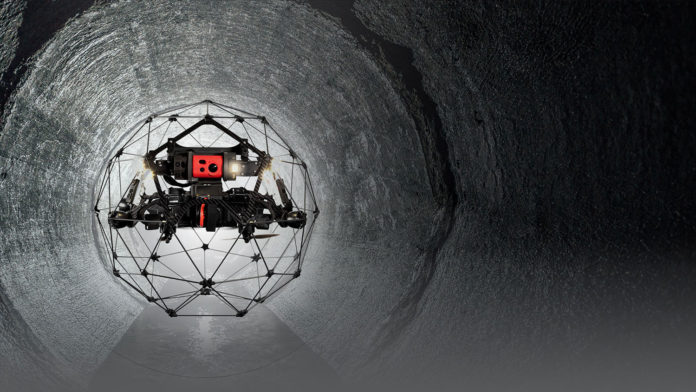After reaching the depths of the world’s deepest ice caves in Greenland, Flyability’s Elios 2 drone embarked on an inspection of one of the most inaccessible and dangerous places – the Chernobyl Nuclear Power Plant, the site of the tragic disaster that took place in April of 1986. Researchers at Chernobyl used the Elios 2 to determine that no nuclear waste was present in Reactor Five for the first time since the 1986 disaster.
At the time of the disaster, the Chernobyl Plant’s fifth block was under construction and nearing completion. Given the rush to leave, there was no record of whether the holding pools in Reactor Five had ever received the depleted uranium fuel bars for which they had been made.
Chernobyl’s decommissioning team – working on the dismantling of certain buildings at the nuclear power plant – needed to know whether there was any nuclear waste within Reactor Five. Without risking the health of human operators, it was a question of entering these facilities. So, they commissioned the work to Flyability to inspect the facility using their indoor inspection drone.
The pilot’s from Flyability conducted a mission within Reactor Five to determine whether any nuclear fuel bars were present and whether the primary equipment that would have been used in the reactor had ever been mounted.
To conduct the mission, Flyability pilots stood in the middle of the reactor, in a pit that was about 25 meters (82 feet) deep – a location that would have been inaccessible if the reactor was still active. Eventually, Elios 2 pilots were able to collect enough visual data to determine that the pools were empty, and there was no nuclear waste present anywhere inside.
“The Chernobyl mission was stressful because the wall we had to fly over was 70 meters [230 feet] high, so there was no way we could get the drone back if the signal were lost,” says Charles Rey, the Training Manager at Flyability and one of the mission’s leaders. “But the mission was a great success, and the people in charge at Chernobyl were very happy with the video and images we were able to collect inside Reactor Five.”
Due to its anti-collision protection structure, the Elios 2 is undoubtedly one of the only drones capable of carrying out indoor missions in areas that are inaccessible and out of sight of its operator.
